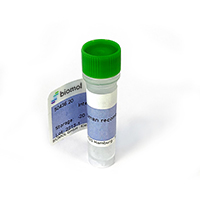Cookie preferences
This website uses cookies, which are necessary for the technical operation of the website and are always set. Other cookies, which increase the comfort when using this website, are used for direct advertising or to facilitate interaction with other websites and social networks, are only set with your consent.
Configuration
Technically required
These cookies are necessary for the basic functions of the shop.
"Allow all cookies" cookie
"Decline all cookies" cookie
CSRF token
Cookie preferences
Currency change
Customer-specific caching
FACT-Finder tracking
Individual prices
Selected shop
Session
Comfort functions
These cookies are used to make the shopping experience even more appealing, for example for the recognition of the visitor.
Note
Show the facebook fanpage in the right blod sidebar
Statistics & Tracking
Affiliate program
Conversion and usertracking via Google Tag Manager
Track device being used

| Item number | Size | Datasheet | Manual | SDS | Delivery time | Quantity | Price |
|---|---|---|---|---|---|---|---|
| 044589.10 | 10 µg | - | - |
3 - 19 business days* |
485.00€
|
If you have any questions, please use our Contact Form.
You can also order by e-mail: info@biomol.com
Larger quantity required? Request bulk
You can also order by e-mail: info@biomol.com
Larger quantity required? Request bulk
BAFF is mainly produced by innate immune cells such as neutrophils, monocytes, macrophages,... more
Product information "BAFF, Soluble (60-mer), Recombinant, Human(highly active) (BLyS, TALL-1, CD257, B Cell Activating Fa"
BAFF is mainly produced by innate immune cells such as neutrophils, monocytes, macrophages, dendritic cells, follicular dendritic cells. T cells, activated B cells, some malignant B cells and also non-lymphoid cells like astrocytes, synoviocytes and epithelial cells can also produce BAFF. BAFF binds three distinct receptors (BAFF-R, TACI and BCMA) expressed predominantly on B cells, although activated T cells also express BAFF-R. BAFF is a master regulator of peripheral B cell survival, and together with IL-6, promotes Ig class-switching and plasma cell differentiation. Besides its major role in B cell biology, BAFF co-stimulates activated T cells. Deregulated expression of BAFF leads to autoimmune disorders in mice. In humans, elevated levels of soluble BAFF have been detected in the serum of patients with various autoimmune diseases such as Sjoegren syndrome, Rheumatoid arthritis (RA), Multiple sclerosis (MS) and Systemic Lupus Erythematosus (SLE). BAFF has also increased levels in some lymphoid cancers. Processed human BAFF can either remain as a trimer, which is usual for TNF family ligands or assemble into 60-mer composed of 20 trimers. Mouse BAFF 60-mer has been identified in the serum of BAFF transgenic mice. Oligomerization of BAFF 3-mer into 60-mer in human BAFF is prevented by mutation of His218, a residue critical for 3-mer-to-3-mer interactions, but not for receptor binding. Despite the predominant functional role of processed BAFF in vivo, membrane-bound BAFF might also play a role. Indeed, soluble BAFF (3-mer) can trigger BAFF-R but not TACI or BCMA, whereas oligomeric forms of BAFF (BAFF 60-mer), which mimic membrane-bound BAFF, activate all BAFF receptors. Biological Activity: Increases B cell survival /Proliferation. Increases CD21 / CD23 expression on B cells in vivo. Activates BAFF-R, TACI and BCMA receptors. Works at concentrations <20ng/ml. Sequence: The extracellular domain of human BAFF (aa 134-285) is fused at the N-terminus to a His-tag. Storage and Stability: Lyophilized powder may be stored at -20°C. Stable for 6 months after receipt at -20°C. Reconstitute with sterile ddH2O. Aliquot to avoid repeated freezing and thawing. Store at -20°C. For maximum recovery of product, centrifuge the original vial after thawing and prior to removing the cap. Further dilutions can be made in assay buffer.
| Keywords: | BAFF, TNFSF13B |
| Supplier: | United States Biological |
| Supplier-Nr: | 044589 |
Properties
| Conjugate: | No |
| Species reactivity: | human |
| Format: | Highly Purified |
Database Information
| KEGG ID : | K05476 | Matching products |
| UniProt ID : | Q9Y275 | Matching products |
| Gene ID : | GeneID 10673 | Matching products |
Handling & Safety
| Storage: | -20°C |
| Shipping: | +4°C (International: +4°C) |
Caution
Our products are for laboratory research use only: Not for administration to humans!
Our products are for laboratory research use only: Not for administration to humans!
Information about the product reference will follow.
more
You will get a certificate here
Viewed




